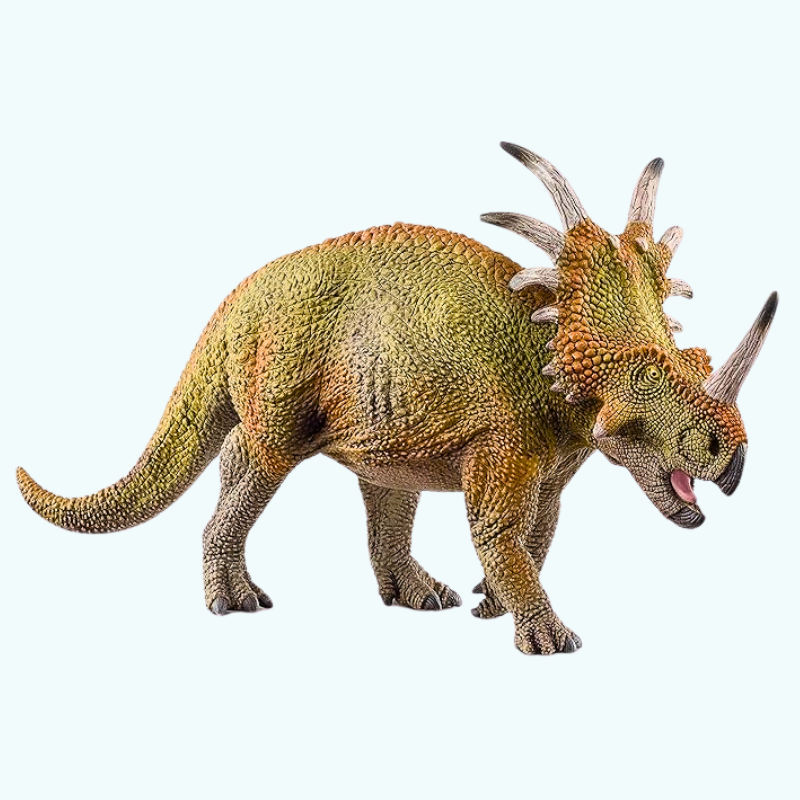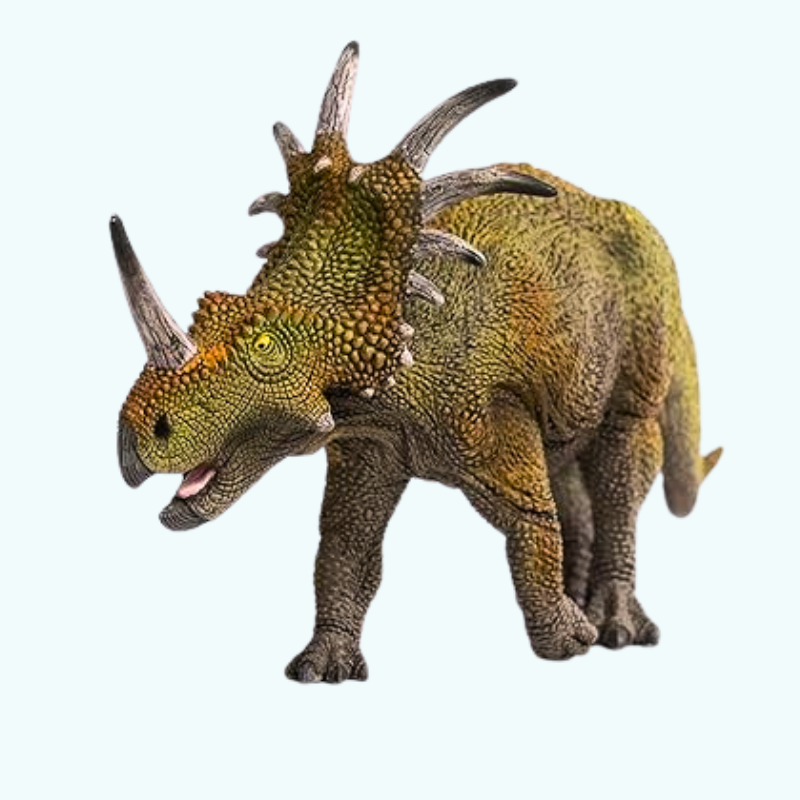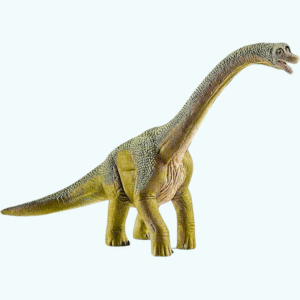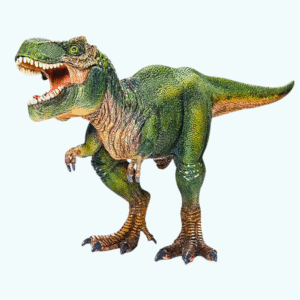Description
Styracosaurus lived during the late Cretaceous period, around 75 million years ago. With its impressive frill and long horn, it stood out among other dinosaurs. This herbivore traveled in herds, using its strong build for protection.
Meet The Styracosaurus – A Unique Prehistoric Herbivore
With its striking features and intriguing habits, the Styracosaurus stands out among its dinosaur relatives. Let’s dive deeper into the world of this remarkable creature.
The Era: When Did A Styracosaurus Live
The Styracosaurus lived during the Late Cretaceous period, approximately 75 million years ago. This was a time when many dinosaurs thrived and evolved into various forms. The climate was warm, with abundant plant life. Fossils of the Styracosaurus have been primarily found in North America.
- Warm climate with rich vegetation
- Home to many other dinosaurs like Triceratops
- Dinosaurs were the dominant land animals
Researchers continue to study Styracosaurus fossils. This helps us understand more about its behavior and habitat. For instance, fossils suggest it lived in herds. This behavior might have helped with protection against predators.
The Meaning Behind The Name “Styracosaurus”
The name Styracosaurus means “spiked lizard” in Greek. This name reflects its impressive physical features. The dinosaur had a large neck frill and several prominent spikes.
The Styracosaurus was named in 1913 by paleontologist Lawrence Lambe. Lambe chose this name because of its distinct appearance. The large frill and horns likely served important functions. They may have been used for defense against predators.
- It emphasizes the dinosaur’s spiked features.
- Reflects its herbivorous nature, being a plant-eater.
- Highlights the scientific naming process in paleontology.
Understanding the meaning of “Styracosaurus” helps us appreciate this dinosaur even more. Its name captures the essence of its physical traits and its place in history.
Exploring The Details Behind Styracosaurus Models
Exploring the details behind Styracosaurus models can reveal much about its life and habitat. From its impressive horns to its diet, every detail adds to our understanding of this unique creature.
A Closer Look At Its Impressive Horns
The Styracosaurus is best known for its remarkable horns. It had one large nose horn that could grow up to 60 cm long. This horn was not just for show; it played a role in defense and possibly in mating displays. In addition to the nose horn, Styracosaurus featured:
- Six long spikes on its neck frill
- Small horn-like projections on its cheeks and jaws
These features made Styracosaurus look fierce and intimidating. The long spikes on the frill likely provided protection against predators. The large nose horn may have been used in combat with other Styracosaurus. Fossil evidence suggests these horns were strong, allowing the dinosaur to defend itself effectively.
How The Styracosaurus Fed: Its Plant-based Diet
Styracosaurus had a herbivorous diet consisting mainly of low-growing plants. It evolved flat teeth that were perfect for grinding plant matter. This adaptation helped it efficiently process tough vegetation. Styracosaurus fed on:
- Ferns
- Cycads
- Palms
Its beak-like mouth allowed it to clip and tear foliage easily. This feeding mechanism was vital for survival in its environment. Fossil evidence shows that Styracosaurus lived in areas rich in these plants, providing ample food sources. To summarize, the Styracosaurus:
- Had a diet focused on low-growing plants.
- Evolved teeth suitable for grinding.
- Possibly used its beak to clip tough vegetation.
These features reveal how well-suited Styracosaurus was for a life of herbivory in its ancient ecosystem.
Was It A Meat-eater Or Not?
Styracosaurus was not a carnivore. This dinosaur was strictly plant-eating. Its body structure and teeth confirm its herbivorous nature. Unlike some of its relatives, it did not hunt or scavenge for meat.
- Flat grinding teeth for processing plant material
- Strong jaws capable of chewing tough vegetation
Fossils indicate that Styracosaurus thrived in environments with abundant plant life. Its diet was crucial for its growth and survival. Understanding these dietary habits helps clarify its role in the ecosystem. In summary:
- Styracosaurus was strictly herbivorous.
- It evolved features suited for a plant-based diet.
- It played a significant role in its habitat as a primary consumer.
These insights into Styracosaurus show how it interacted with its environment and the plants that formed its diet.





Reviews
There are no reviews yet.